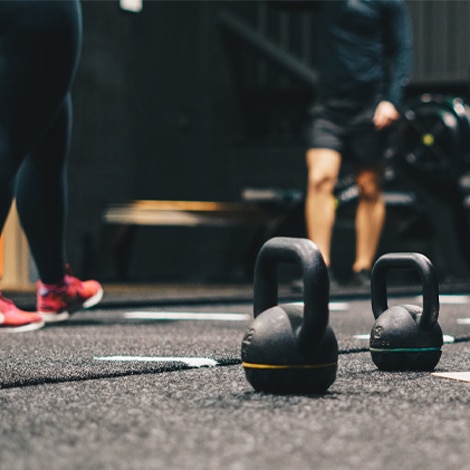In recent years, the balance of power between teams and players has tipped in athletes’ favor. This increased level of influence, impact off the court in social and political issues, and control has changed how players want to see and utilize their medical, health, and performance data, and puts more of a premium on mental health and overall wellness. In this post, we’ll examine how an athlete management system (AMS) can help performance staff better meet athletes’ expectations and needs.
In leagues like the NBA, one of the main reasons load management has become a hot topic is because top players have insisted that teams prioritize their health over their on-court/on-field performance. This has put a premium on the collection and utilization of recovery data. The NBA load management trend arguably began with the dispute between Kawhi Leonard and the San Antonio Spurs in the wake of his quad injury in 2017. Commenting on how Kawhi’s lengthy recovery process elevated the significance of load management in pro basketball, former LA Lakers strength and conditioning coach Tim DiFrancesco wrote:
“In the past, most players had deferred to their team’s medical staff to establish a return-to-play timeline and meet the necessary milestones along the way. But while Kawhi was almost certainly consulting with physicians, physical therapists, and other professionals, he set a precedent by removing control from the team’s staff.
This is by no means meant to be a criticism of Kawhi or the Spurs. The former had every right to have the final say over what happened with his body, and I’m sure the latter offered all the same care and service that it would to any player who was injured. But it was clear that once others took notice of how the dynamic had changed, more athletes would demand the kind of autonomy that Kawhi now had.”
Since Kawhi’s successful return to play, which culminated in him leading the Toronto Raptors to the NBA title and winning Finals MVP, load management has been a hot topic in the league. Older players seeking to extend their careers increasingly take more rest days, while younger ones returning from injuries are more cautious and risk-averse than back in the heyday of Willis Reed, who played in the 1970 NBA Finals and guarded Wilt Chamberlain despite having a leg bone fracture.
An AMS like Smartabase empowers players to be actively involved with the performance team in their own load management and injury recovery process. As every authorized user can clearly see progression and regression in an intuitive, at-a-glance visual format, it’s easier to make on-the-spot decisions about whether an individual should play or rest on any given day.
Mind Your Mental Health
It isn’t just physical wellbeing that players are taking more charge of than ever before. Athletes like Simone Biles, Michael Phelps, Naomi Osaka, and Kevin Love have shined a bright spotlight on their mental health. Players’ increasing concerns about depression, anxiety, and stress make the use of a system like Smartabase to collect wellness survey data more crucial than ever before.
Daily surveys can ascertain how calm or anxious a player might be, what their mental state is, and how hard they perceived training sessions to be. With the latter, if the individual ranks a session that they’d previously considered a four or five out of 10 to be an eight or nine, this can indicate that they’re worn down emotionally as well as physically.
Surveys can also help highlight persistent mindset issues. The AMS can flag if a player drops below a certain threshold on consecutive days and trigger an intervention by a sports psychologist, counselor, or team chaplain. If the player consents to it, this specialist can then record meeting notes in Smartabase to provide added subjective context. When combined with more objective data, this provides a holistic, 360-degree view of each player’s overall wellness and puts their mental health on the same priority level as their physical state.
While seeking the help of a mental health professional might seem like an individual decision, a team can play a significant role in assisting any player who needs greater resources than are available in-house. “The Cavs helped me find a therapist, and I set up an appointment,” Kevin Love wrote in an article for The Players’ Tribune. “I went to my first appointment with the therapist with some skepticism. I had one foot out the door. But he surprised me. For one thing, basketball wasn’t the main focus. He had a sense that the NBA wasn’t the main reason I was there that day, which turned out to be refreshing. Instead, we talked about a range of non-basketball things, and I realized how many issues come from places that you may not realize until you really look into them. I think it’s easy to assume we know ourselves, but once you peel back the layers it’s amazing how much there is to still discover. Since then, we’ve met up whenever I was back in town, probably a few times each month.”
Making the Link Between Recovery and Performance
Mental and physical health are both tied to recovery data. It’s not enough for a player to merely be exposed to an adequate training load – they must be able to bounce back from daily training to minimize their adaptation.
Many teams have started utilizing devices like WHOOP bands and Oura rings to collect players’ health data, but without the use of an AMS, the full potential of such information will remain untapped, as it’ll be trapped on the device and will be more difficult to interpret and apply to improve players’ habits.
Due to the increase in athlete autonomy, though, clubs would do well to seek player buy-in before deploying such technology. In an article for Sports Illustrated, Ben Pickman quoted Kyle Kuzma as saying the wearable that the NBA wanted players to use in the bubble for the 2020 Playoffs looked like “a tracking device,” indicating his hesitancy to wear it. Because of such concerns, the potential use of wearables should be a collaboration between coaches and players, so the latter can feel they have a seat at the decision-making table and their voices are being heard.
“In the military, the use of wearables in a unit can be mandated because of the top-down structure of the organization,” said Smartabase consultant Richard Meldrum. “However, in pro and college sports, that’s inverted, and the model is bottom-up, so coaches and performance staff must get on the same page with their players as they can’t force them to use wearables.”
A platform such as Smartabase can help to increase the likelihood of athletes getting on board with using wearables. It enables the sports science team to show correlations between metrics like better sleep and higher HRV scores and improved performance. The AMS can also help athletes derive “so what” takeaways that the coaching staff can tie into player education on topics like sleep hygiene, hydration, injury reduction, and recovery. In the case of wearables and the NBA’s Playoffs bubble, the league and individual teams achieved buy-in by showing players how such technology could be an early indicator if they got sick so that they could receive more responsive treatment.
Back in the 80s, 90s, and early 2000s, teams’ medical and performance professionals had ownership of athletes’ data. But nowadays, players demand full access and more control. A system like Smartabase can provide this, while also making it easier to understand what the information is suggesting so it can be more easily applied to prompt positive lifestyle changes. In turn, these will have positive effects on players’ game day outcomes, mental health, and overall wellbeing. In the era of athlete autonomy, having ready access to their own performance and health data makes players feel valued, empowered, and in control of their own careers.








